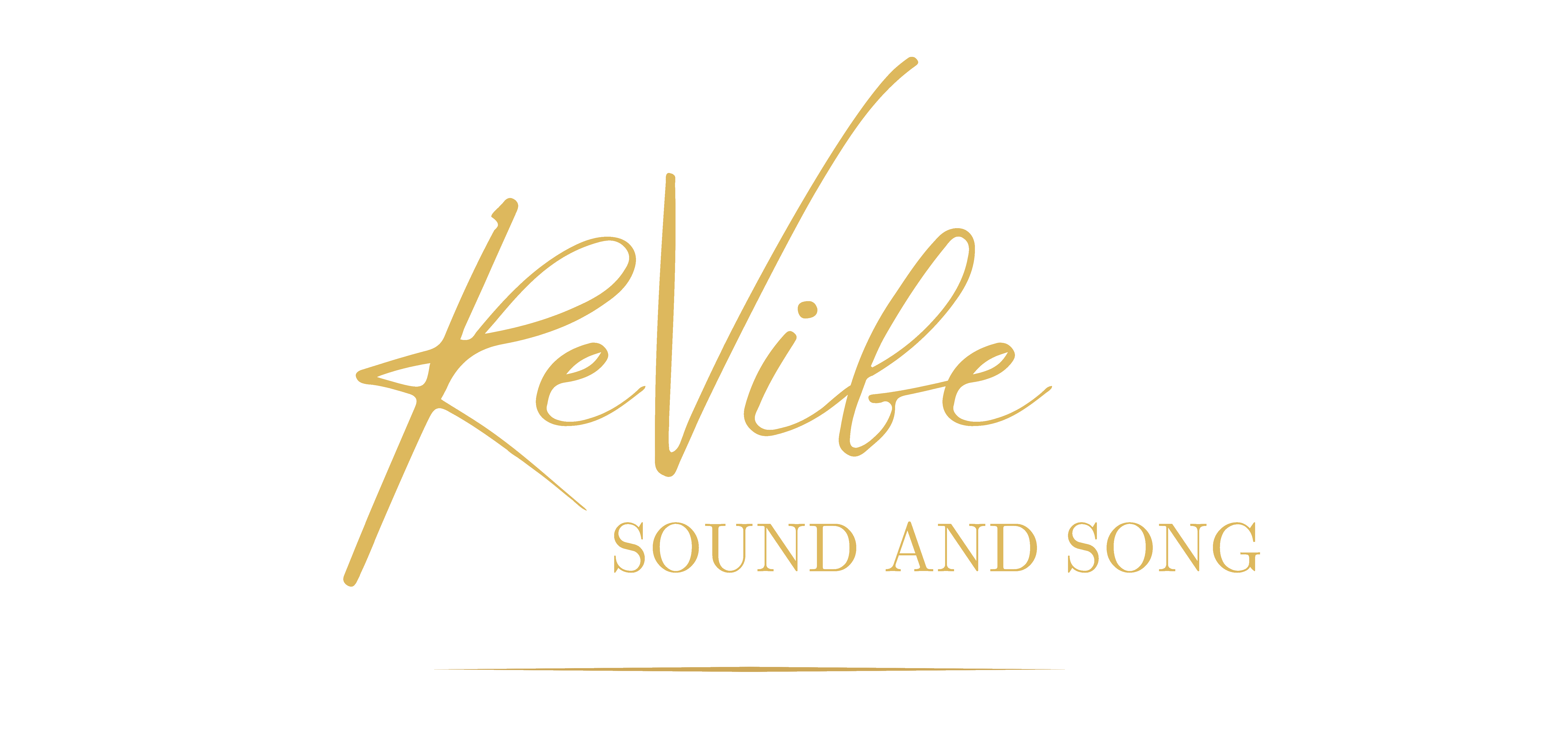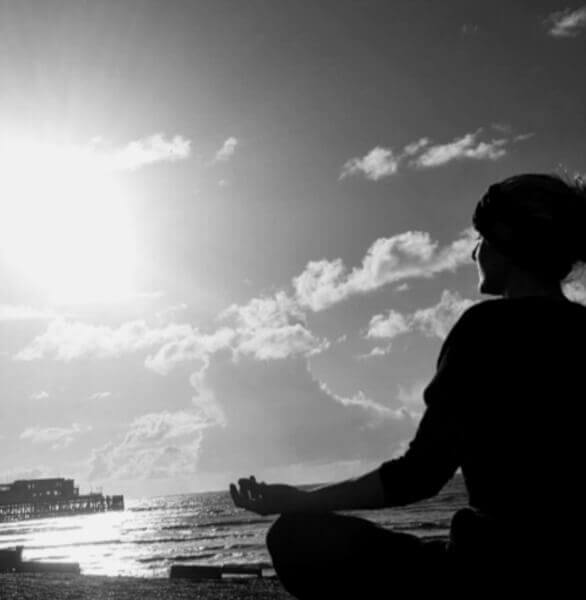

Reinvest - Reconnect
Have you been ReVibed?
Our mission: to provide practical, instantly accessible, everyday tools that will give you the confidence
and freedom to live your life as authentically and fully as possible.
To guide you back to the
very core
of who you are through the transformative joy and power of breath, mantra and song.
Find out more
-Rumi-
What they're saying about us
Our Services



Kate Benson
Kate is a highly qualified and experienced musician, coach and leader, and is ReVibe’s beating heart. As well as our Founder and Creative Director, Kate teaches all our classes, courses, events and experiences. A person of boundless passion, warmth and infectious energy, Kate has sung and performed all her life, but it wasn’t until she started running community choirs that she discovered just how empowering and life-changing singing could be. So much so that Kate has set up and run choirs all over the country, most recently in East and West Sussex, and will continue to include and create new and exciting opportunities for people to join her in song as part of ReVibe’s retreats and weekend workshops.
Along the way, Kate discovered yoga and for the first time ever experienced an inner sense of space and calm that allowed her to think more clearly and better manage her emotions. Enthused and invigorated, she went on to study the discipline in greater depth, becoming an advanced practitioner in pranayama (breathwork) and mantra (vocal yoga). Kate believes breathwork is an essential and easy to learn transformative tool that can help to bring about effective change for everyone. By focusing on the steady rhythm of our breath we can learn to switch our attention inward to the quiet wisdom of our voice within and away from the daily din outside, protecting us from the inevitable ‘overwhelm’ and helping us to reclaim a healthier sense of control over who we are and what it is that we truly want.
A big believer in the power of knowledge and discipline, Kate very much sees herself as a one-women motivational cheer squad and guide! It is her mission to help improve the well-being of as many people as possible by using what is instantly accessible and readily available to us - our voice and our breath. Kate’s positivity, dynamic and inspirational personality and teaching style has benefited thousands, and she is determined to reach, help and teach many, many more.
Prior to all this, Kate worked as a Broadcast Journalist at the BBC, and in 2022 published a fictional memoir: Limbo Land.
Our Story Our Ethos
Our Community
Contact Us
Breath

Your mind is your worst best friend. It chatters on and on, keeping you informed and
entertained, but often, and unintentionally, lets you down in times of need.
This is because much like a computer, your brain is hard-wrired to process and save
everything it’s told. All this ‘filed away’ information creates a unique kind of algorithm
designed to give you what your brain thinks you want.
Primarily, it is trying to protect you, but in truth, leads to a ‘default mindset’ that traps
you into applying learned patterns of unhealthy habits and behaviours over and over.
But, thankfully, just like a computer, you can learn to reprogramme your brain to
allow it to work more efficiently for you and in line with your true needs and desires.
Picture the following scenario: You are tired from a poor night’s sleep, hit the snooze
button and fall back to sleep. You awaken in panic and skip breakfast to make up
time. You don’t yet know it, but in your frenzied state you leave your phone on the
kitchen table. Whilst working you are distracted by the numerous open tabs in your
brain all competing for your attention. You blow up unfairly at a colleague and reach
for your phone looking for respite. But your phone isn’t there. You dig around in your
bag and your pockets, but you can’t find it. You’re frustrated and stressed. Where is
it?!
There is nothing unusual about the scenario above, it’s a familiar and direct
consequence of the constant pull and pace of 21st century living.
But the danger of these seemingly insignificant and frequently experienced
scenarios, is that they start to chip away at us causing a build up of overactive
‘nowhere to go’ stored up energy in our minds and bodies impacting both our
physical and mental health.
The good news though, is that by learning to influence the breath - and in turn our
thoughts and emotions, we have the power to turn all this around and reclaim
control.
When we are afraid, stressed, overwhelmed or nervous our breathing patterns
change. The two are interlinked, and we can use this to our advantage.
By consciously slowing down the breath - and with it our heart rate and nervous
system - we are sending a message to our brain that everything will be okay.
With every inhale we expand and create space, inviting fresh new possibilities, subtly
shifting our awareness within. With every exhale we relax and release unnecessary
tension, letting go of what we no longer need.
Essentially, we are looking to use the breath to cultivate the skill of observation -
‘Pratyahara.’ When the breath is slow and the mind is still, what do you notice? How
do you feel? What rises to the surface? Learn to listen to and to rest, deeply inward, using your
breath as a tool to retain focus.
You will meet resistance at first; the brain is a tricky beast to tame, but stick with it,
trust the process, allow the breath to do its work and overtime, and with regular
practice, you will start to notice positive differences in the way you behave and
respond in highly charged emotional and challenging situations.
To learn how to use the breath in this way and a whole host of other techniques to
strengthen, soothe and bring balance to the mind and body book a free one 2 one
consultation or check out our workshops and retreats
Mantra

You know that warm, fuzzy feeling you get inside when someone notices
and comments on something positive you might have said or done? It has
the power to turn your whole day around for the better. You feel seen,
accepted, appreciated, understood.
Unfortunately, a negative comment or a lack of acknowledgement has the
opposite effect, often setting in motion a destructive spiral of self doubt
that is tough to talk yourself out of, and before you know it every little
thing you’ve ever worried about starts looping round and around in your
mind like some kind of evil carousel of torture!
The point is this: words matter! A seemingly harmless throw-away
response is an easy shrug off for some, but a harmful re-affirmation of a
lack of self worth for others.
But perhaps the most dangerous voice we are exposed to is our own. Tell
yourself it isn’t possible, again and again, and guess what? It won’t be.
Tell yourself it is possible, not just once, or every now and again, but
regularly, and, well, you get the idea...
There is an official name for this phenomenon - mantra. Today, in the
western world, it is mostly used as a tool for motivation - to set us up for a
tough day ahead, or to help us start or complete a specific project. Back in
the day, however, mantra was more of a sacred, daily ritual of self-care
passed on from generation to generation to focus and clear the mind for
spiritual growth and enlightenment.
These mantras were spoken in Sanskrit - a root language first uttered by
the ancient Rishis of India thousands and thousands of years ago.
The vibrations triggered by repetitive vocalisation awaken dormant
energy centres within the body and have a hypnotic/meditative effect on
the mind, gently transporting the practitioner into a state of awareness.
It’s powerful stuff, and because the simplest and most powerful mantras
are single syllable mantras - known as ‘seed’ or ‘Bīja’ mantras, we don’t
need to be a expert in Sanskrit to recite them, and chances are if you’ve
ever been to a yoga class, you’ll have given ‘the daddy’ of all these
mantras a go already.
‘Auṁ’ is the most commonly recited mantra in existence. It is effectively
three sounds blended into one and contains all the sounds of the Sanskrit
alphabet. Essentially, it is just a fancy ‘hum’, a sound we make
instinctively from birth and use intuitively to self-soothe.
When we chant the sounds of ‘auṁ’ we do so in an upward trajectory (root
to rise) moving in a progressive path from the manifest (the actual) to the
unmanifest (the possible). The mantra ends with the release of what is
known as ‘anusvāra’ (a sustained hum) to internalise and intensify the
resonance for maximum effect.
Easy and accessible, the chanting of auṁ is a therapeutic tool of unrivaled
transformative potential for all, and when practiced regularly is
considered to be one of the fastest routes to samādhi - the highest state of
consciousness.
Pretty cool, huh? Wanna know more? Begin your journey today and book a
free one to one consultation or sign up to our introductory course for
mantra beginners
Song

Ask an adult if they like to sing and you’ll get a reply that sounds
something a little like this: “Me? Noooo. Well, I mean yes, in the car, the
shower, but in public? (Vigorously shakes head) Nope, no one needs to
hear that…” Ask a child, and they’ll more than likely burst into song right
there and then!
So, what changes? When and why do we suddenly become so self-
conscious and afraid?
When we are little, we sing, and we sing a lot. At nursery, at home, at
school - everywhere. It’s instinctive and a go-to tool for teachers to help
make learning fun. Flick through a book for preschoolers, and what do you notice? The
majority of the stories are told through comical patterns of rhythm and
rhyme.
Wanna remember the days of the week in French? Learn it in song-format
and it’ll stick forever.
Children are encouraged to access their voice to further their growth and
understanding, and to use it as a trusted resource for self expression. At
primary school, singing in assemblies and end of term productions is a
childhood staple. How the children sound and perform is irrelevant; the
goal is to unify the group and teach the importance of connection.
Over time though there are less and less opportunities for us to come
together and sing, and we all but forget how much we used to enjoy it.
But when we do get to re-experience it - for example, at motivational sing
alongs at football games or as part of a merry throng of fanatical fans at a
rock gig, we are instantly reconnected to the powerful feelings attached to
our early experiences and fully surrender to the freedom and familiarity of
the moment.
So, how can we recreate this effect and benefit from it more often?
Join a choir. And no, not the strict kind of choir you were booted out of at
school; an inclusive community choir for all. It’ll be one of the best
decisions you will ever make.
Just like those ‘care-free-anything-goes-just-get-involved’ primary school
productions, singing in a community choir is all about well-being and
union.
The more you go, the more you will want to go; you are now part of the
creation of something and it feels really, really good! And, as the weeks
roll by, its freeing and empowering effects, will start to spill over into your
day to day life and you’ll wonder why you hid from your voice for as long
as you did.
Come and experience the transformative joy and release for yourself at
one of our pop up ‘Big Sings’ or as part of our revitalising flagship ‘tool-kit’ workshops and
retreats.